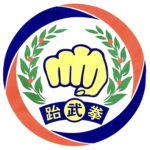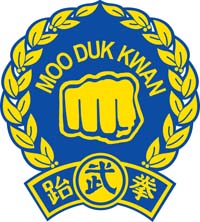

Taekwondo is a whole-body exercise that uses various techniques to defend against an enemy’s attacks by turning all parts of the body into weapons. Basically, all movements of Taekwondo begin with the instinct of self-defense, turning from passive actions to active ones — that is, shifting instantly from the defensive to the offensive in order to overpower an enemy.
It should be emphasized, however, that the true value of training in Taekwondo is found in the philosophical aspect of the art. Taekwondo students aim to reach a stage of complete self-control and higher self by mastering the art, thereby moderating the human aggressive instinct and elevating themselves to the highest level of excellence. In short, Taekwondo aims to cultivate a person into a righteous and true human being.
THE STUDIO is committed to providing the highest quality martial arts training anywhere.
Master Amitis Pourarian is a seventh degree Black Belt and has more than 20 years of experience in Taekwondo. Her focus is on helping individuals develop strong bodies and clear minds. She aims to help children in our programs to become strong, independent human beings capable of making the right decisions in life, and she instills in her adult students the importance of valuing themselves.
THE STUDIO takes pride in being a member of the Moo Do Taekwondo Association (MDTKD) and in teaching Kukkiwon Taekwondo poomsae (forms).
Modern Taekwondo and today’s governing organizations, or Kwans, were officially formed in 1945 after the Japanese occupation of Korea. Today, only the Kukkiwon, Moo Duk Kwan, and Oh Do Kwan (ITF) retain legitimate Korean Rank issuing authority in Taekwondo. The UWTA issues Moo Duk Kwan Dan and Kukkiwon certificates.
Moo Do Taekwondo Association
The Moo Do Taekwondo Association (MDTKD) provides gup (color belt) rank through the Moo Duk Kwan as well as Dan (Black belt ) rank through the Moo Duk Kwan & Kukkiwon.
 The MDTKD is lead by a group of dedicated traditional martial artists who were disappointed in the direction and quality standards set forth by some of the larger martial arts organizations. It was their belief that these organizations had lost the traditionalism associated with the meaning of a true martial arts lifestyle and journey. This can be seen in the lack of genuine respect, courtesy, discipline, and self-control.
The MDTKD is lead by a group of dedicated traditional martial artists who were disappointed in the direction and quality standards set forth by some of the larger martial arts organizations. It was their belief that these organizations had lost the traditionalism associated with the meaning of a true martial arts lifestyle and journey. This can be seen in the lack of genuine respect, courtesy, discipline, and self-control.
Under the guidance of Grand Master Jong Hwan Lee and the Seniors, MDTKD provides direction for a traditional Taekwondo Journey. It is an organization that THE STUDIO is proud to be a part of.
The goal of MDTKD is to practice, live, and teach Taekwondo in the tradition of the Sacred Warrior. This tradition is rooted in the ancient principles of practicing martial arts in dedication to a higher purpose.
Taekwondo is practiced in over 142 countries by more than 40 million people. In 1988, Taekwondo was accepted as a demonstration sport in the summer Olympic games. Today, Taekwondo is now an official event in the Olympic games.
MDTKD Tournament Circuit
The MDTKD operates regional and national tournaments. Regional or state tournaments are held quarterly. National tournaments are held twice a year with the Summer Nationals and Fall Grand Nationals.
Black Belt students accumulate points by competing in regional and national events as part of the MDTKD “Top Ten,” “Final Four,” and National Championship competitions.
MDTKD tournaments are considered an extension of a student’s training.
Standardized Teaching Curriculum
MDTKD supports a standardized student training curriculum as well as a structured teaching system, and it provides instructor certification for the system. All instructors must be certified to teach at a MDTKD school and must maintain their certification through ongoing professional recertification programs.
Kukkiwon
 Kukkiwon, also known as the World Taekwondo Headquarters, is an organization in the Gangnam-gu district of Seoul, South Korea. It was established on November 30, 1972. The Kukkiwon serves as the issuing body for Taekwondo Dan rank (Black Belt degree) promotion and certification. In addition, the Kukkiwon conducts research and instructional seminars and is home to the World Taekwondo Academy, which trains and certifies Taekwondo instructors through its leadership course. The Academy is also entrusted to conduct two instructor courses by the Korean Ministry of Culture and Sports. One is the course for second-class coaches and the other is one for third-class instructors. Nearly 5,400 people are now instructors and coaches registered with the Korean Ministry of Culture and Sports through these courses. Kukkiwon is also involved in technical development and research of Taekwondo, the collection of related materials, public relations and publications, and the training of coaches and students.
Kukkiwon, also known as the World Taekwondo Headquarters, is an organization in the Gangnam-gu district of Seoul, South Korea. It was established on November 30, 1972. The Kukkiwon serves as the issuing body for Taekwondo Dan rank (Black Belt degree) promotion and certification. In addition, the Kukkiwon conducts research and instructional seminars and is home to the World Taekwondo Academy, which trains and certifies Taekwondo instructors through its leadership course. The Academy is also entrusted to conduct two instructor courses by the Korean Ministry of Culture and Sports. One is the course for second-class coaches and the other is one for third-class instructors. Nearly 5,400 people are now instructors and coaches registered with the Korean Ministry of Culture and Sports through these courses. Kukkiwon is also involved in technical development and research of Taekwondo, the collection of related materials, public relations and publications, and the training of coaches and students.
In 1998, 93 non-Koreans from 32 countries (including 14 Americans) were issued Graduation Certificates by the Academy at the first Foreigner Instructors Course. This began the Foreign Instructors Training Qualification Course. The curriculum for belt promotion is specified and certified by the Kukkiwon, including required and compulsory poomsae (or forms), sparring, and breaking techniques.
The Kukkiwon is the only Taekwondo organization whose Dan ranks are recognized by World Taekwondo Federation (WTF). The WTF governs the competition aspects of Taekwondo as the International Federation of Taekwondo of the International Olympic Committee (IOC). The WTF does not issue Dan ranks or Black Belt certifications. As noted in September 2007 issue of the Korean/English Taekwondo Magazine, the Kukkiwon and the WTF are separate organizations, although the two are often confused with each other. As a result, the term “WTF” is sometimes used to refer to the Kukkiwon-style Taekwondo.
Note about the WTF: The WTF was the bridgehead to promote Taekwondo sparring as an international sport, now having made it an official sport of the 2000 Summer Olympics after participation in the 1988 Summer Olympics and 1992 Summer Olympics as a demonstration sport.
Moo Duk Kwan
Moo Duk Kwan History
Moo Duk Kwan, translated literally, means “the institute of martial virtue.” It was founded in Seoul, Korea by Hwang Kee on November 6, 1945 following World War II (Korea was liberated from Japan on August 15, 1945). In that same year, Hwang Kee became the first president of the Moo Duk Kwan.
 Moo Duk Kwan was able to develop and expand its branch schools and members through Hwang Kee’s endless efforts and contributions. He formed the Korea Tang Soo Do Association in September, 1958, and Moo Duk Kwan became a member of Korea Tang Soo Do Association.
Moo Duk Kwan was able to develop and expand its branch schools and members through Hwang Kee’s endless efforts and contributions. He formed the Korea Tang Soo Do Association in September, 1958, and Moo Duk Kwan became a member of Korea Tang Soo Do Association.
- In December 1958 the Korea Tang Soo Do association unsuccessfully tried to join the Korean Athletic Association.
- In June 1960 the Korean Soo Bahk Do Association, named after the traditional Korean martial art, was formed by Hwang to replace the Korean Tang Soo Do Association.
- The Tang Soo Do Association was liquidated and Moo Duk Kwan subsequently became a member of the Soo Bahk Do Association.
- In March 1965 the Soo Bahk Do Association attempted to unite with the Korea Taekwondo Association but the effort was again unsuccessful.
- After the failure, a majority of the Moo Duk Kwan members left the Soo Bahk Do Association and joined the Korea Taekwondo Association.
- In April 1965 Moo Duk Kwan officially became a member of the Korea Taekwondo Association. On November 20, 1965 Master Kang Ik Lee was elected by the Board of Directors of the Moo Duk Kwan as the president of Moo Duk Kwan, Korea Taekwondo Association. Unfortunately, Moo Duk Kwan was now divided into the Taekwondo Association and the Soo Bahk Do Association.
- On July 27, 1971 the Board of Directors of Moo Duk Kwan elected Master Chong Soo Hong as the 3rd President of the Moo Duk Kwan Taekwondo Association. Several attempts were made by Master Chong Soo Hong to unify the two divided Moo Duk Kwans but his efforts have not yet been successful.
- In February 1974, however, as a result of Master Hong’s contributions to Taekwondo, he was appointed Vice President of the Taekwondo Central Gymnasium (Ku Ki Won) in Seoul Korea.
As of today, the majority of Moo Duk Kwan members are under the Taekwondo Moo Duk Kwan Association. At the present time in Korea alone, Moo Duk Kwan has about 500,000 members actively training. Moo Duk Kwan has branch schools in more than 40 countries and there are over 300,000 Moo Duk Kwan members in the USA.
Grand Master Jong H. Lee, Chief Master Robinson, Senior Master Rankin, and Senior Master Corrie of the UWTA are all currently ranking members of the Korean Moo Duk Kwan Taekwondo Association.
About the Moo Duk Kwan Emblem
- The fourteen laurel leaves on each side represent the fourteen states of Korea and the advancement of peace.
- The three seeds joined to the laurel leaves on each side of the emblem represent the “three thousand li” (the distance running north to south) of Korea, the “Land of the Morning Calm.”
- The six seeds in total indicate the world and represent the continents.
- The fist represents Taekwondo and justice.
- The Korean character in the center of the circle means Moo Duk Kwan.
- The character on the left of the circle means Tae and the character on the right of the circle means Kwon.
- The deep blue color of the emblem represents the three oceans and black belts.
As a whole, the emblem symbolizes the spreading of Moo Duk Kwan throughout the fourteen states, i.e., all of Korea, and then across the oceans to the continents of the world. Moo Duk Kwan, as an international institution, works to achieve the objectives of peace and human advancement as the emblem symbolizes.
Korean Taekwondo Terminology
Seogi (Stance)
Moa Seogi (Closed Stance)
- Stand upright, feet touching, knees straight
Naranhi Seogi (Parallel Stance)
- One foot width between feet
Ap Kubi (Front Stance)
- Four and 1/2 foot length
- Feet one fist width apart
- 2/3rds of weight on front foot
- Rear foot turned 30 degrees
Beom Seogi (Tiger Stance)
- One foot length, front foot lifted
- Rear foot turned 30 degrees
- 100 percent of weight on rear foot
Juchum Seogi (Middle Stance)
- Width of the feet two foot length
- Knees bent
Ap Seogi (Walking/Forward Stance)
- One foot width between feet (Three foot length)
- Weight evenly distributed on both legs
Dwit Kubi (Back Stance)
- Three foot length
- Both knees bent 90 degrees
Makki (Block)
Arae Makki (Low Block)
- Two fist lengths between blocking fist and the thigh
- Non blocking hand is on waist
Momtong Makki (Body Blocking)
- The hand and wrist must be kept at the center of the body
- The elbow is to be bent 90-120 degrees
- The blocking fist is kept as high as the shoulder
- The blocking wrist should not be bent
Olgul Makki (Face/High Blocking)
- Blocking wrist is one fist distance
- Blocking hand comes from outside
